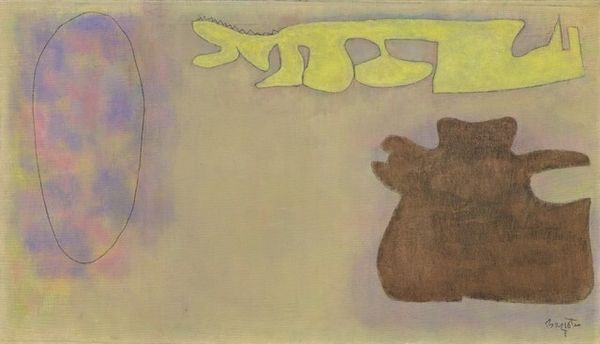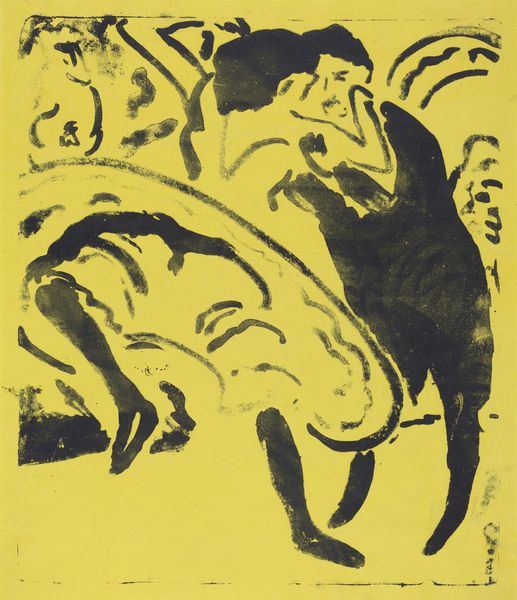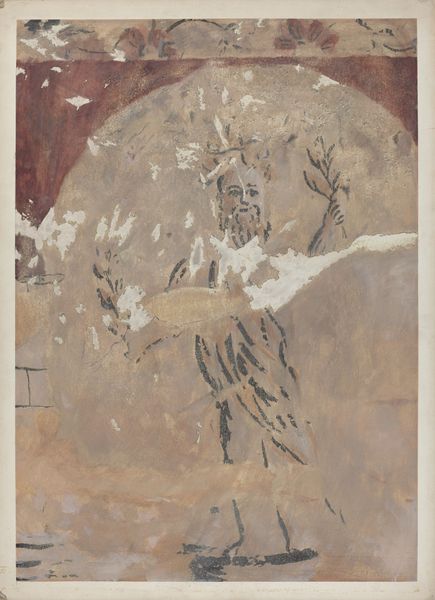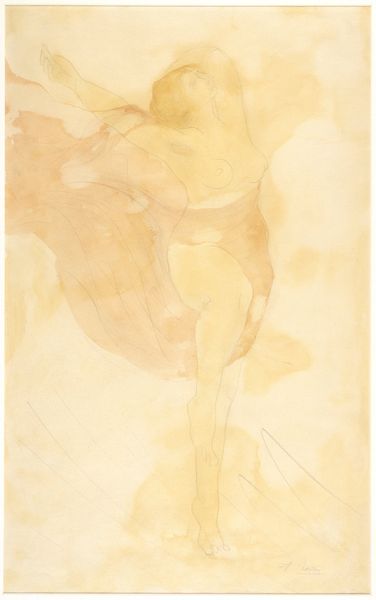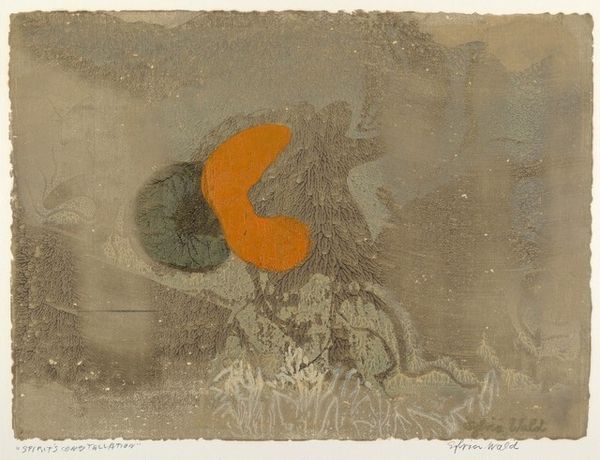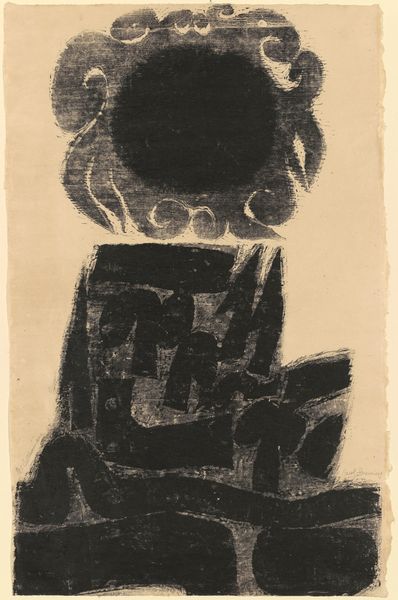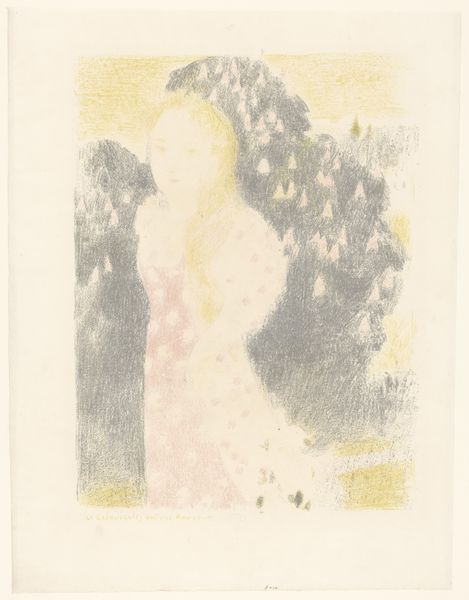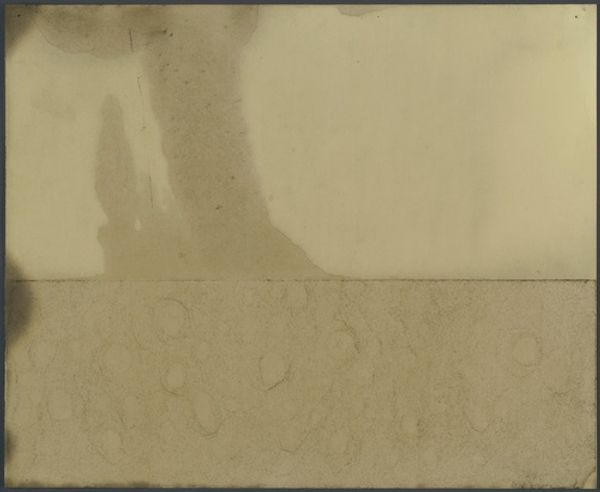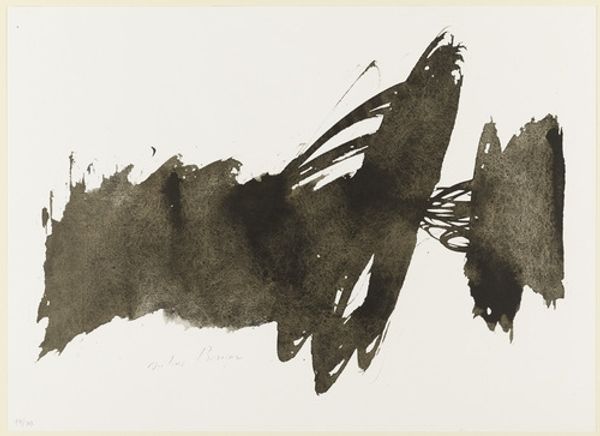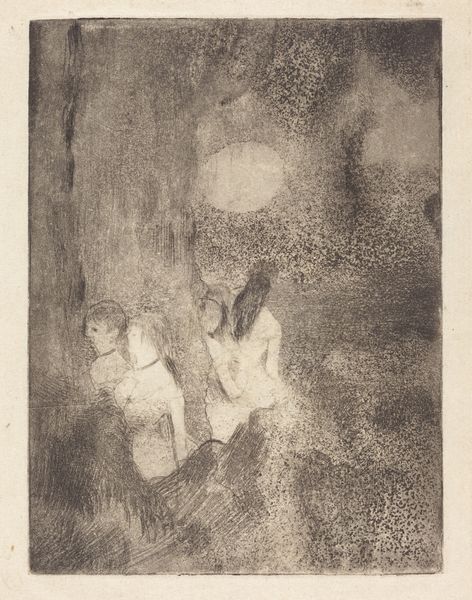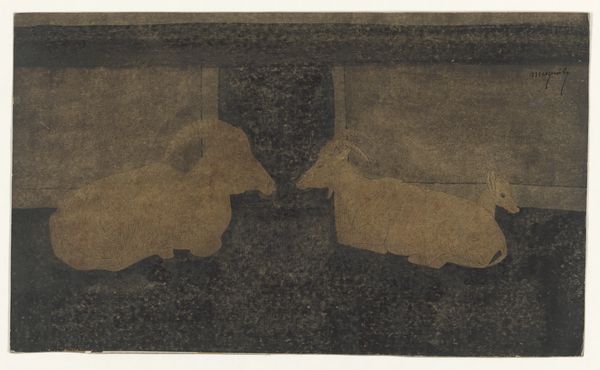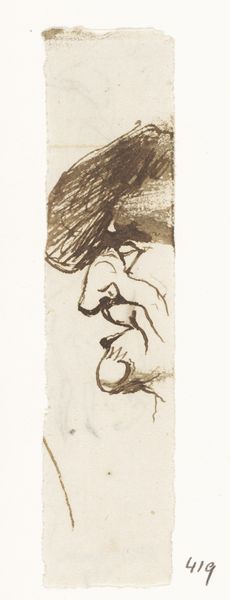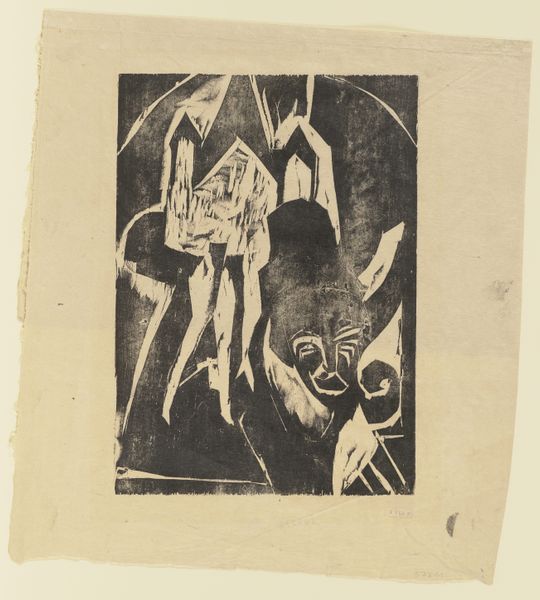
Dimensions: Sheet: 14 15/16 × 10 3/16 in. (38 × 25.8 cm) Image: 14 1/2 × 10 3/16 in. (36.8 × 25.8 cm)
Copyright: Public Domain
Curator: Here we have Henri de Toulouse-Lautrec's 1893 lithograph, "Miss Loïe Fuller," currently residing at the Metropolitan Museum of Art. Editor: My first impression is that it feels almost spectral. Like a wisp of smoke frozen mid-dance. There's a transience, a fragility that the earthy tones do little to ground. What was the context for its creation? Curator: Loïe Fuller was an American dancer, a pioneer of modern dance really, famous for her performances with swirling silk costumes illuminated by colored lights. Lautrec was captivated. This image really captures the spirit of Art Nouveau. The curving lines evoke both movement and a sense of organic growth, like a flower unfolding. Editor: I'm drawn to the materiality of the printmaking process here. To get this hazy, ethereal effect, you know he's not just pulling straightforward impressions. The layers of ink, the spattering…it feels almost like he’s experimenting with the medium, pushing it to mirror Fuller’s innovative manipulation of light and fabric. The lithographic crayon, gouache, pastel – layering allows this sense of motion in a still format. Curator: Exactly! The swirling, organic shapes reference her "serpentine dance." Look how the form alludes to butterfly wings, or even flames – all symbols of transformation and ephemeral beauty, recurring in this era. They represent metamorphosis, something almost otherworldly. The suggestion of hidden meaning beneath the surface. Editor: Absolutely. The almost muddy palette fights against those aspirations though. Given the radical labor-saving printing technology of the time, I almost see an elegy for lost labor and artistic gesture… like Fuller's innovative dances this process is modern, reproducible and widely accessible, making what was unique now more democratic. Curator: An interesting contrast. A mechanized democratization in reproducing a dance form so avant-garde for its time. Considering that Art Nouveau was about bringing art into everyday life, this piece successfully captures this ambition. Editor: Agreed. Considering the rapid industrialization and societal changes underway at the time, Lautrec’s piece encapsulates a yearning for something new. Curator: Definitely food for thought. Thank you! Editor: Thanks, likewise.
Comments
No comments
Be the first to comment and join the conversation on the ultimate creative platform.
